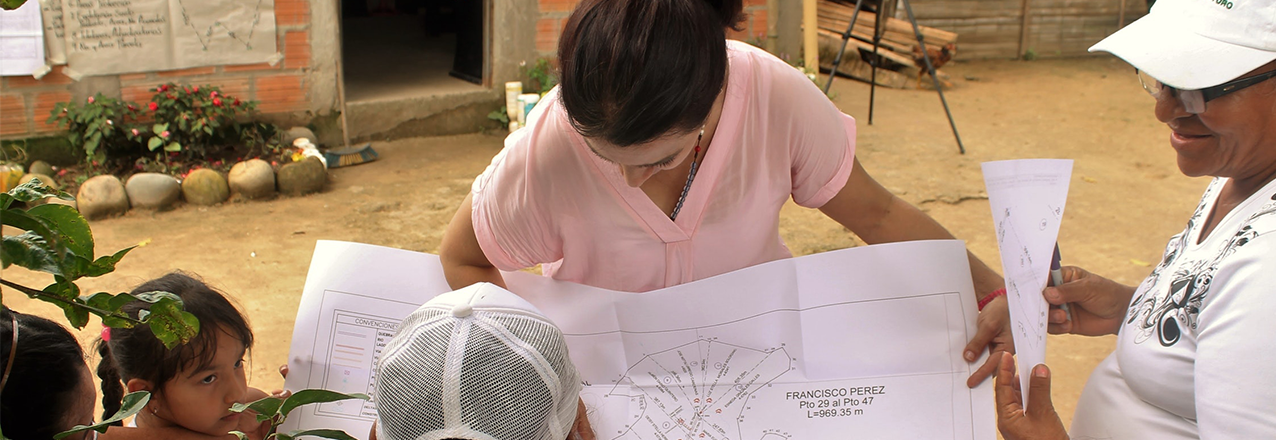Q&A with Juliana Cortés, Director of Rural Land Tenure & Land Use Planning, National Land Agency
THE NATIONAL LAND AGENCY CURRENTLY HAS 23 LAND FORMALIZATION PILOT PROJECTS IN DEVELOPMENT. WITH THE FUNDING AND SUPPORT OF USAID, THE PILOT PROJECT IN THE MUNICIPALITY OF OVEJAS IN THE DEPARTMENT OF SUCRE IS THE MOST ADVANCED AND REPRESENTS AN OPPORTUNITY TO REACH THE GOALS OF THE PEACE ACCORDS, WHERE LAND USE PLANNING IS A TOP PRIORITY. JULIANA CORTES LEADS THE DIRECTORATE FOR RURAL LAND TENURE AND USE PLANNING AT THE NATIONAL LAND AGENCY (NLA) AND IN THIS INTERVIEW SPEAKS ON THE IMPORTANCE OF THE PILOT AND NEW STRATEGIES FOR SUSTAINABLY FORMALIZING PROPERTY IN COLOMBIA.
Q: How would you explain this massive land formalization pilot project in Ovejas to someone who is unfamiliar with land and property issues?
A: Previously, land formalization was done in a completely isolated and independent manner, and now this pilot project is changing how things are done in the rural sector. We selected the Municipality of Ovejas, in Sucre, and are focusing on resolving all the conflicts and situations regarding land in that area. To do this, we visit each plot of land to uncover these situations in order to find solutions. This is an innovative pilot performed on a massive scale and requires coordination among various agencies that know the area, such as the Agustin Codazzi Geographic Institute (IGAC), the Superintendence of Notary and Registry, and the community – especially community leaders. We received the support of USAID to establish the methodology we are using and to fund the pilot project.
Q: How important is land formalization to this administration?
A: This government is very committed to organizing property and formalizing land. We have a significant amount of national resources that have allowed us to cover more area than ever before in the history of Colombia. These resources have also allowed us to implement this massive land formalization methodology in many other municipalities. There is always a need for more resources, but we expect to achieve solid and well-structured results. And we hope that these types of programs continue in the next administration.
Q: How does the Ovejas Pilot Project fit in with the framework of the Peace Accords?
A: Rural reform is the backbone of the Havana Peace Accords, which has very ambitious goals for land formalization. The Ovejas Pilot Project represents a new way of operating. It uses the big picture approach, a massive sweep methodology, allowing us firsthand knowledge of the number of plots of land and the types of conflicts in the territory. This methodology also involves community participation, which is also a part of the Peace Accords.


